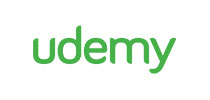154 - Introduction to Fourier Analysis
155 - Introduction to Discrete Fourier Transform
156 - DFT Basis Functions
157 - Deducing the Inverse DFT
158 - Calculating the Discrete Fourier Transform DFT
159 - Coding Developing the DFT algorithm Part I
159 - DFT.zip
160 - Coding Developing the DFT algorithm Part II
161 - Coding Developing the DFT algorithm Part III
162 - Coding The Inverse Discrete Fourier Transform of an ECG signal Part I
162 - IDFT.zip
162 - ecg-data.zip
163 - Coding The Inverse Discrete Fourier Transform of an ECG signal Part II
164 - Coding The Inverse Discrete Fourier Transform of an ECG signal Part IIII
165 - Coding The Inverse Discrete Fourier Transform of an ECG signal Part IV
166 - Symmetry between Time domain and frequency domain Duality
167 - Polar Notation
168 - Coding Rectangular to Polar conversion
169 - Coding Polar to Rectangular conversion
170 - Introduction to Spectral Analysis
171 - The Frequency Response
172 - The Complex Number System
173 - Polar Representation of Complex Numbers
174 - Eulers Relation
175 - Representation of Sinusoids
176 - Representing Systems
177 - Introduction to Complex Fourier Transform
178 - Mathematical Equivalence
179 - The Complex DFT Equation
180 - Comparing Real DFT and Complex DFT

